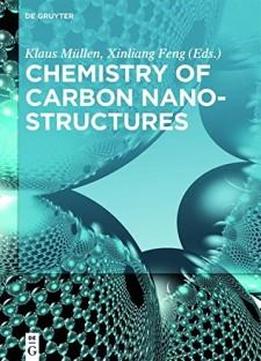
Chemistry Of Carbon Nanostructures
by Andreas Hirsch /
2017 / English / PDF
8.4 MB Download
Chemistry of Carbon Nanostructures aims to present the current
state-of-the-art synthesis and application of carbon materials
like nano diamonds, ribbons and graphene-like structures in
science and engineering. Edited by Professor Klaus Müllen, who
received the Adolf von Bayer Medal for his contribution to Carbon
Chemistry, and Xinliang Feng, this book combines outstanding
contributions by a renowned international team of experts.
Chemistry of Carbon Nanostructures aims to present the current
state-of-the-art synthesis and application of carbon materials
like nano diamonds, ribbons and graphene-like structures in
science and engineering. Edited by Professor Klaus Müllen, who
received the Adolf von Bayer Medal for his contribution to Carbon
Chemistry, and Xinliang Feng, this book combines outstanding
contributions by a renowned international team of experts.
The authors discuss chemical aspects of carbon nanostructures,
their synthesis, functionalization and design strategies for defi
ned applications. Recent advances in carbon nanomembranes,
molecule-assisted ultrasound-induced liquid-phase exfoliation of
graphene, and solution synthesis of graphene nanoribbons and
biological application of nanodiamonds are highlighted topics.
The authors discuss chemical aspects of carbon nanostructures,
their synthesis, functionalization and design strategies for defi
ned applications. Recent advances in carbon nanomembranes,
molecule-assisted ultrasound-induced liquid-phase exfoliation of
graphene, and solution synthesis of graphene nanoribbons and
biological application of nanodiamonds are highlighted topics.
This book provides an excellent reference on the chemistry of
carbon nanostructures for Chemists, Materials Scientists,
Condensed-matter Physicists, Surface Scientists, and Engineers.
This book provides an excellent reference on the chemistry of
carbon nanostructures for Chemists, Materials Scientists,
Condensed-matter Physicists, Surface Scientists, and Engineers.











